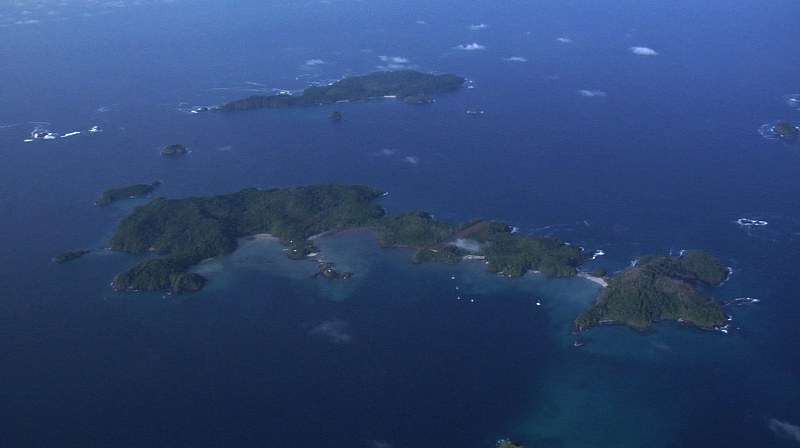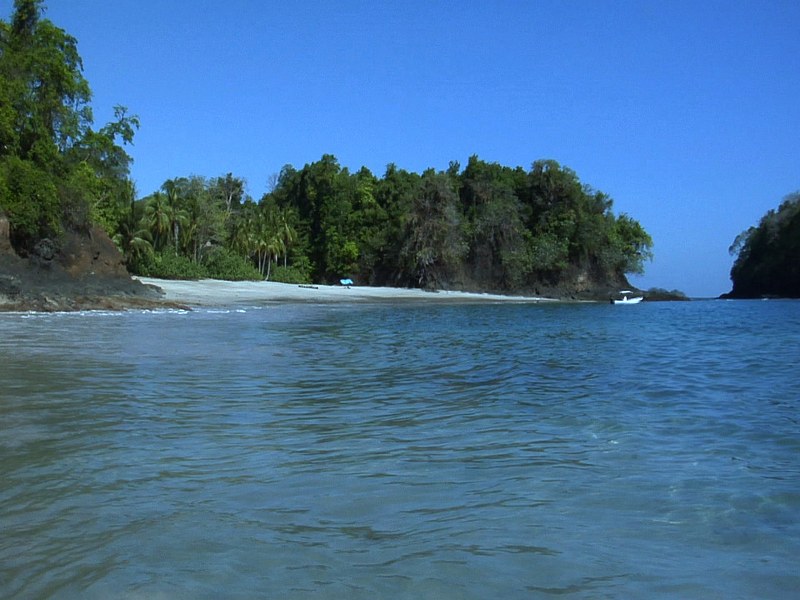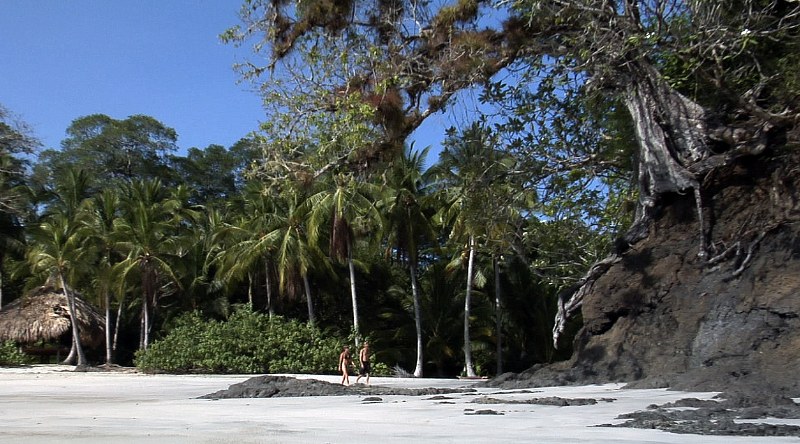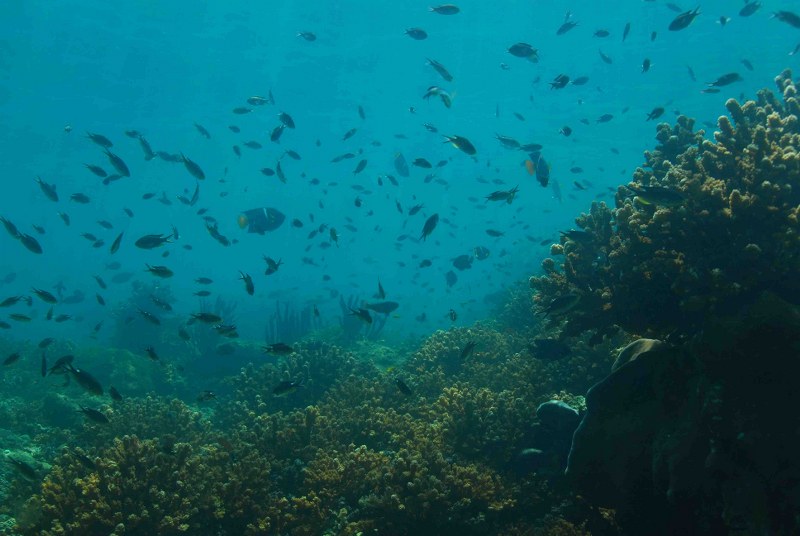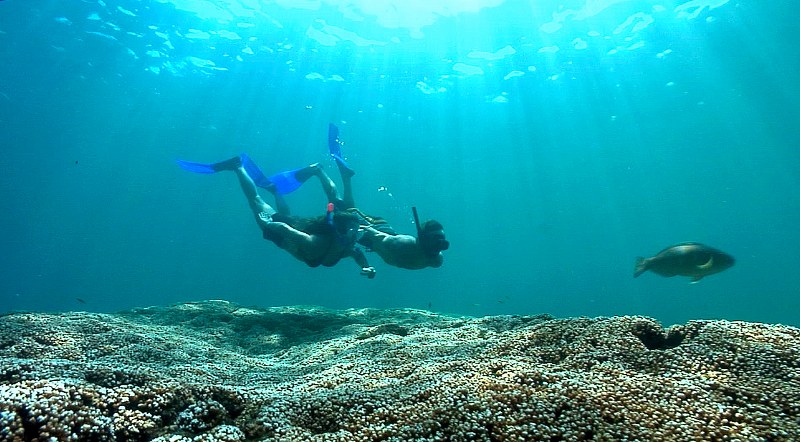Cleaning the Beaches at Islas Secas

GARBAGE! A never ending issue in Panama. For those of us who have come from cities and countries where regular garbage pickup and recycling are the norm, it takes a little getting used to the process (or lack thereof) here in Panama. A whale watching trip off Contadora in the Pearl Islands may have you noticing the long lines of garbage accumulating close to where the currents change. It’s sad. Panama has the potential to be a more gorgeous, tropical country! But, take a moment to look around you; even though the country’s development does at times seem behind what we are used to, there are changes occurring here regarding GARBAGE!
Out in another beautiful part of the Panamanian coastline, Las Secas, a group known as Project AWARE is participating in the organization of a beach cleanup for September 25. Las Secas, which is located in the Archipelago de Las Secas, northwest of Coiba Island in the Gulf of Chiriqui, is the home of Islas Secas Resort and is also a PADI diving location. PADI, the largest scuba diving certification agency in the world, has initiated Project AWARE which is a foundation that works in partnership with divers and water enthusiasts to combat challenges facing underwater environments.
This is the first such event for the area, and Project AWARE is helping to organize the cleaning of two or three beaches on the 25th. One in particular, Playa Pargo, is especially beautiful and secluded and is one of the most frequently used beaches in the area. A guest of the Las Secas Resort can choose to be a “castaway” for a day on this beach. “When the tide is low, the rocky outcrops contain tidal pools, like natural Jacuzzis, with lots of colorful tropical fish that nibble at your feet if you bathe in the pools. It's simply a magical place!” says Kevan Mantell, one of the PADI dive instructors at the Resort.
As a dive instructor with PADI, Kevan states that PADI endeavors to include responsible environmental stewardship as part of any of the courses they teach. “Personally, I feel this is a key part of the instructor's work: providing education to all student divers, irrespective of level of training and age,” says Kevan. In keeping with this tone, the Islas Secas Resort took the initiative to register their planned cleanup with Project AWARE while maintaining the responsibility of funding and holding the event themselves. Those who reside on Islas Secas are environmentally aware, and they work hard to value the spectacular natural beauty of the archipelago, both terrestrial and marine. As an example, they have installed moorings on all of their dive and snorkeling sites, 16 in all, to avert anchoring and damage to the reef.
So why Islas Secas? The area has been described by Dr. Peter Glynn from the University of Miami and STRI as, "One of the most picturesque coral reefs in the region.” Dr. Glynn has been monitoring this reef since 1972. He has data and results from two very significant El Nino events that reeked disaster on many coral reefs in The Tropical Eastern Pacific, including the Galapagos Islands. The reef at Las Secas covers an area now of around 21 hectares and is a perfect place to see most reef species representative of the area. “The reef is predominately made up of a reef-building coral called Pocilopera. It’s around 4500 years old and has vertical growth of around 9mts/27ft. It’s a great place to see behavior of marine life, too: mating and cleaning events, and symbiotic relationships between several marine species, the big and small and the bad and the beautiful,” says Dr. Glynn.
Las Secas, one of the island groups closest to the mainland, is more affected by the trash that is disposed of in the mangroves of the region and, indeed, the rivers on the mainland. Depending on the tides and the moon each month, the trash amount can vary. During high tides, the situation is worse; at high tides the water levels rise higher than normal and bring with them the accumulation of trash that has been disposed of in the rivers and mangroves. In addition, the trash also affects the Humpback whales which arrive here every year during the months of July to October. The whales, from both the Artic and Antartic, venture to this area to give birth and remain for several weeks while the calves are building up their weight and fat necessary to survive the cold waters of their winter feeding grounds at the poles.
If you are unable to be in Islas Secas for the cleanup, Kevan says you can contribute in other ways.
1. Try to recycle your trash and always deposit it in the proper receptacles, never the street or the ocean.
2. Try to buy products that do not have excess packaging.
3. Try to reuse plastic bags for grocery shopping or buy specially designed ones made of recycled materials. (Even El Rey sells reusable bags now!)
Though Panama is just getting on the recycling bandwagon, as evidenced by bins in the city, there are always little things you can do to make a difference. Change is happening all around us in Panama. Sometimes, it just means looking at things from a slightly different perspective.
(Follow this link if you wish to learn more about Project Aware.) http://www.projectaware.org/about/index.php

